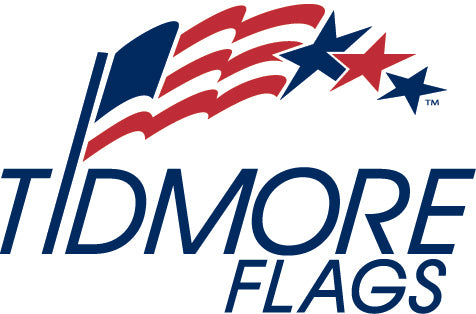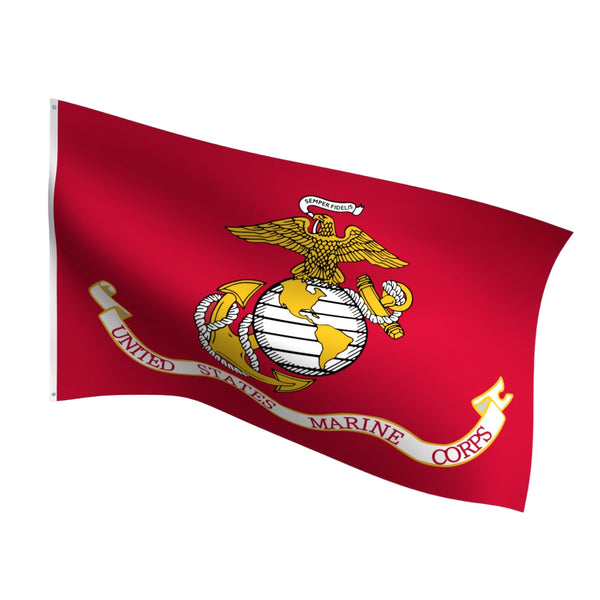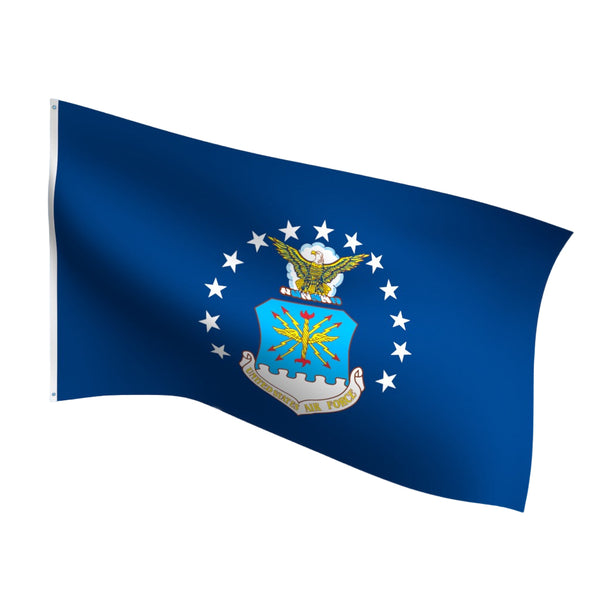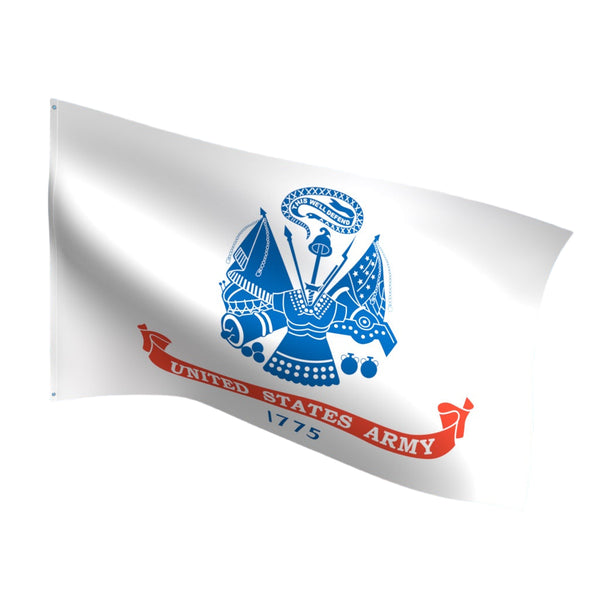Flag Order of Precedence and POW/MIA Placement

Share
The stands are filling, a brass band is tuning up, and a light breeze lifts the edge of the Stars and Stripes. You’ve got one shot to stage this perfectly—multiple poles, service flags, a POW/MIA banner, maybe a state flag and your organization’s colors. When the crowd turns to face the flags, you want two things: flawless respect and zero doubts about whether you hung them in the right order. That’s where military flag order of precedence—and precise POW/MIA placement—turn ceremony into confidence.
In this guide from Tidmore Flags (family-owned since 1963), you’ll get a practical playbook: what the order of precedence is, how to arrange flags on one pole vs. multiple poles, where the POW/MIA flag belongs in different scenarios, why these rules exist, and how to avoid the most common (and most visible) mistakes. We’ll share a real story, answer FAQs, and leave you with a one-glance checklist to get it right the first time—every time.
Shop POW/MIA Flags - Nylon, Polyester and Indoor Fringe
Why Order Matters: Respect, Clarity, and Zero “Uh-Oh” Moments
Flag displays aren’t decoration; they are statements of honor. Proper order of precedence ensures two things:
- Respect for national sovereignty and service: The U.S. flag takes highest honor. Service flags follow a long-established military sequence that recognizes historic precedence.
- Clarity for the audience: A well-ordered array communicates immediately—no confusion about which standard leads and how others relate to it.
Bottom line: a correct display honors veterans and families, prevents awkward mid-ceremony fixes, and reflects well on your institution—school, city hall, VFW, American Legion post, courthouse, business, or stadium.
The Core Order (Peacetime): U.S. → State → City/Organization → Military Services → Others
- United States flag (highest honor)
- POW/MIA (see dedicated section—often directly beneath the U.S. on the same pole, or in the next place of honor on separate poles)
- State flag
- Municipal flag
- Institutional/organizational flag (school, agency, company)
-
Military service flags in the following order of precedence:
- U.S. Army
- U.S. Marine Corps
- U.S. Navy
- U.S. Air Force
- U.S. Space Force
- U.S. Coast Guard
Indoor Presentation sets - American flag, state flags, and military flags
POW/MIA Placement—The Place of Honor, Without Confusion
The POW/MIA flag holds a unique status. It’s not a state or military service flag; it’s a national symbol of remembrance and a congressionally recognized banner. In practice, that gives it priority over state, municipal, and organizational flags in most displays.
Single pole (one halyard)
Top: U.S. flag → Directly beneath: POW/MIA → then state → city → organization → service flags (in precedence).
Two poles (equal height)
- Pole 1 (place of honor): U.S. flag
- Pole 2: POW/MIA at top, then state, then others. If each pole carries one flag, fly POW/MIA alone on Pole 2.
Three poles (equal height)
- Center (or taller) pole: U.S. flag
- Left (audience’s left): State flag
- Right (audience’s right): POW/MIA
- City or organization flags may hang beneath state or POW/MIA.
Indoors (auditoriums, sanctuaries, gyms)
- U.S. flag at the speaker’s right (audience’s left)
- POW/MIA positioned in a distinct place of honor, not buried in a mixed cluster or out-ranked by local flags.
One Pole vs. Many Poles: Make It Obvious at a Glance
One Pole
Top to bottom: U.S. → POW/MIA → state → city → organization → service flags (Army → Marine Corps → Navy → Air Force → Space Force → Coast Guard). Limit the stack to prevent tangles and wear.
Two Poles
Pole of honor: U.S. alone. Second pole: POW/MIA on top, then state, then others. If you want service flags visible daily, consider a third pole or a dedicated service array.
Three Poles
Center/tallest: U.S. Left (audience’s left): state. Right (audience’s right): POW/MIA. Municipal or organizational flags hang beneath state or POW/MIA as needed.
Service Flag Arrays
Group service flags together in proper order: Army → Marine Corps → Navy → Air Force → Space Force → Coast Guard. Avoid splitting service flags with non-military flags.
A True-to-Life Story: The Field House Dedication That Almost Went Sideways
A midwestern school district planned a field house dedication to honor alumni who served. Two equal-height poles stood out front. The test layout placed the school flag above POW/MIA, and the six service flags in random order on the second pole.
A Marine veteran parent noticed and quietly advised a correction. They reworked the display:
- Pole A (place of honor): U.S. flag alone
- Pole B: POW/MIA on top, state beneath, school flag beneath state
- The six service flags formed a separate indoor array in the correct order with placards: Army, Marine Corps, Navy, Air Force, Space Force, Coast Guard
At the dedication, a Gold Star family paused beneath the POW/MIA flag. “Thank you for giving that flag its place,” the mother said. The committee had gotten it right—the etiquette, the message, and the moment.
The “What” and “Why” Behind Military Flag Order of Precedence
Why does the Army come first? Precedence is rooted in historical seniority—the Army’s lineage as the oldest service, followed by the Marine Corps and Navy, then the Air Force, Space Force, and Coast Guard. This sequence shapes military flag order of precedence for service flags in static displays and often informs color guard sequences during ceremonial posting. Keeping the order intact shows institutional understanding and honors every branch appropriately—without unintentionally diminishing any one service.
The “How” That Prevents Mistakes (and Emails from Protocol Officers)
- Decide your layout first (one pole, two poles, three+ poles).
- Place the U.S. flag at the highest point of honor (top of a single pole; center/taller pole in a group; speaker’s right indoors).
-
Place POW/MIA:
- Same pole? Beneath the U.S. and above all others.
- Separate pole? Give it the next most prominent position (right-hand pole in a three-pole set, or the second pole in a two-pole set).
- Add state, city, organization flags in that order.
- Group service flags together in proper order (Army → Marine Corps → Navy → Air Force → Space Force → Coast Guard).
- Avoid mixed arrays that make viewers guess; keep like-with-like.
- Mind heights: The U.S. should be the highest or most prominent. On equal-height poles, place the U.S. in the center or on the audience’s left, per your configuration.
- Check local directives if you’re on government or military property.
Quick-Glance Checklist (Pin This Near the Flag Cabinet)
- U.S. first (highest / place of honor).
- POW/MIA next (beneath U.S. on same pole, or on the most prominent secondary pole).
- Then: state → city → organization.
- Service flags together in order: Army → Marine Corps → Navy → Air Force → Space Force → Coast Guard.
- Indoors: U.S. at speaker’s right (audience’s left); POW/MIA in a distinct place of honor.
- Less is more—don’t overload one halyard.
Common Pitfalls (and Simple Fixes)
- POW/MIA too low: If it’s under a city or school flag, move it up—ideally just below the U.S.
- Service flags out of order: Double-check the sequence; keep a small printed card in the storage bin.
- U.S. not in the place of honor: On equal poles, the U.S. belongs center or on the audience’s left.
- Overstuffed halyard: Two or three flags max on one rope to prevent tangles and premature wear.
- Mixing arrays: Keep the service array together and separate from state/city/organization if possible.
One Question for You (So We Can Help Precisely)
What’s your exact setup—how many poles, what heights, and which flags are you flying (U.S., POW/MIA, state, city, organization, and which service flags)? Share that, and we’ll map your perfect layout line-by-line so your ceremony is effortless.
FAQ: Military Flag Order of Precedence & POW/MIA Placement
What is the correct military flag order of precedence?
For service flags: Army → Marine Corps → Navy → Air Force → Space Force → Coast Guard. Keep them together as a group.
Where does the POW/MIA flag go?
Directly beneath the U.S. flag on the same pole, or on the next most prominent pole if separate. Above state, city, and organizational flags.
Can I fly the POW/MIA flag every day?
Yes—many civic sites and veteran organizations do. Some highlight it on designated observances, but continuous display is appropriate.
Where do state and city flags fit?
After the U.S. and after the POW/MIA flag: U.S. → POW/MIA → state → city → organization.
How do I handle different pole heights?
The tallest or center pole gets the U.S. flag. Distribute remaining flags by precedence to the side poles, keeping POW/MIA in the more prominent secondary position.
Indoors, which side is the place of honor?
The U.S. flag goes to the speaker’s right (audience’s left). Place POW/MIA where it is clearly honored and not lost in a cluster.
Can I mix service flags with state/city on the same rope?
Avoid it if possible. Keep the service flags together in sequence, ideally on their own poles or in a dedicated indoor lineup.
Practical Tips That Save Time (and Flags)
- Label sleeves or grommet bags with their order; you’ll thank yourself at 6 a.m. on ceremony day.
- Use quality hardware (snaps, halyard, truck, cleat); nothing undermines a ceremony like a jammed rope.
- Size correctly: on equal poles, keep flag sizes consistent; the U.S. may be slightly larger if allowed.
- Prep for wind: high winds tangle multi-flag stacks; if forecasted, simplify to U.S. + POW/MIA.
- Inspect monthly: trim early fraying on the fly end; rotate a backup for storms or multi-day events.
Bringing It All Together
When you follow military flag order of precedence and honor correct POW/MIA placement, your display does more than look right—it feels right. Veterans notice. Families notice. Students and guests notice, too, even if they can’t say why. Order tells a story: who we are, whom we honor, and what we remember.
Need a Hand? We’ll Lay Out Your Exact Plan.
At TidmoreFlags.com, we stock U.S., state, military service, and POW/MIA flags—USA-made—plus poles and hardware built to last. Tell us your layout (number of poles, heights, and which flags), and we’ll send back a precise diagram and shopping list so setup is 100% straightforward.




